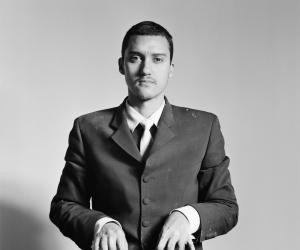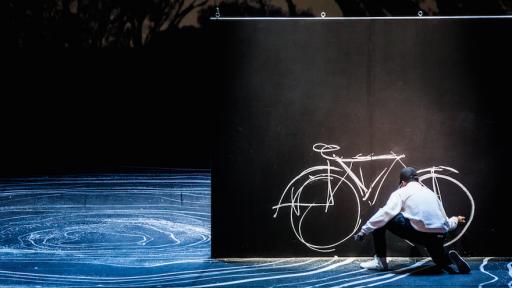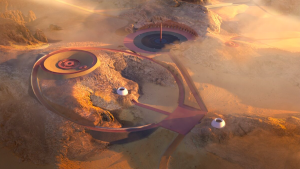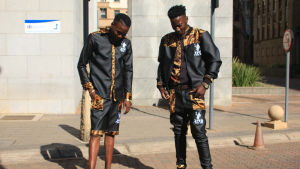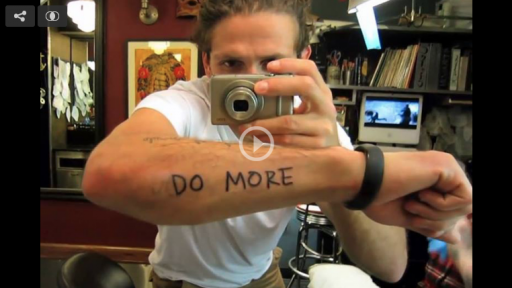When visual artist Robin Rhode took to the Design Indaba stage in 2017, he didn’t deliver your average Design Talk. Accompanied by his “doppelgänger” – a role taken on by artist and dancer Kevin Narain – the Cape Town-born, Berlin-based Rhode put on a showstopping performance in an effort to convey to the audience the intricacies involved in his artistic process.
A multidisciplinary artist whose work encompasses film, photography, performance, drawing, street art and sculpture, Rhode’s style is visually minimal yet conceptually complex. In his Design Indaba presentation, he set about showcasing what he calls ‘The Four Processes of Drawing’, using four materials: charcoal, chalk, oil crayon and spray paint, while Narain acted as his ‘Shadow-Self’.
With his street art inspired by the cave paintings of those indigenous to the Western Cape, his presentation drew upon similar influences. Using four different canvases, he created renderings of a candle, a bicycle, a set of boxes and a car right there on stage. Explaining to the audience how he sees drawing as a way to track time and engage with societal issues, Rhode and Narain then set about destroying the work they built in an effort to communicate that there is no real ownership when it comes to art.
In an interview with the artist following his performance, he went into greater depth as to the thinking behind his presentation:
“My idea was to develop a performance that could showcase various aspects of the drawing process,” Rhode explained. “I developed this idea of using the doppelgänger about 6 or 7 years ago where I felt that I could have more control over the image or drawing if I could step away and give ownership to someone else. “

